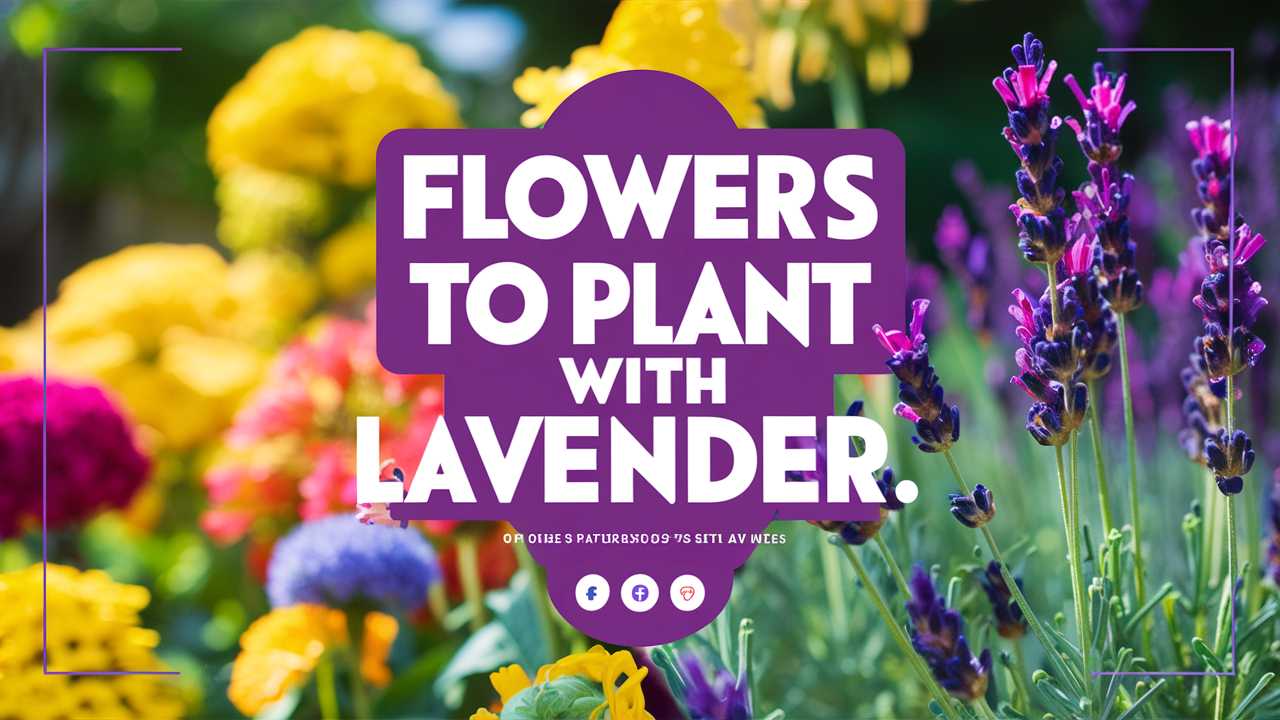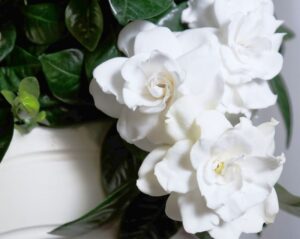In this post, we will explore some of the best flowers to grow alongside lavender. These pairings are based on factors such as growing conditions, aesthetic synergy, and the ability to cohabitate without competing fiercely for resources.
Yarrow
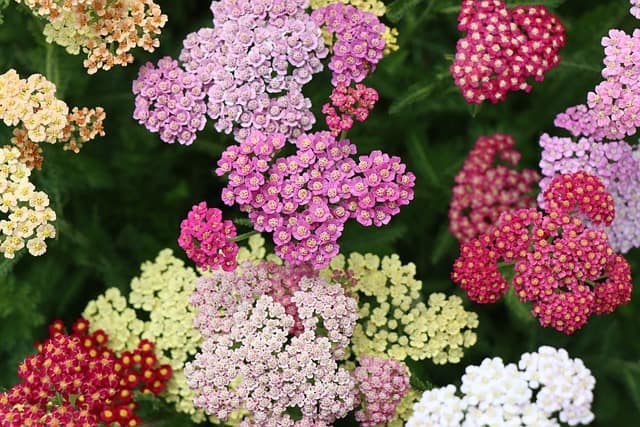
Yarrow is a hardy perennial known for its feathery foliage and clusters of tiny flowers that can bloom in shades of white, yellow, or pink. This flower does particularly well in similar conditions to lavender, thriving in well-drained soil and full sunlight.
Not only does yarrow share the same preference for dry conditions, but its pollinator-friendly nature attracts beneficial insects to the garden, complementing lavender’s role as a nectar source. The two create a visually appealing mix, with lavender’s spiky form contrasting beautifully against yarrow’s flat-topped flower clusters. This pairing is also beneficial for pest control; yarrow can deter some pests while attracting helpful predatory insects.
African Daisy
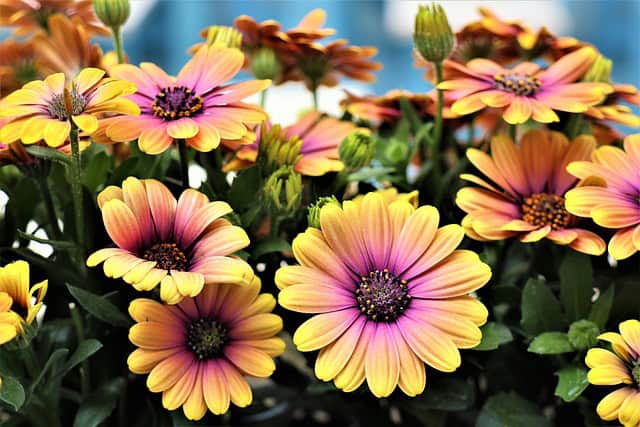
The African Daisy, or Osteospermum, offers vibrant colors that contrast delightfully with lavender’s calming hues. These daisies thrive under the same sun-filled conditions as lavender, needing well-drained soil to flourish.
Planting African daisies alongside lavender not only enhances the visual appeal of your garden but also promotes biodiversity. The bright colors of the daisies will catch the eye while lavender’s aromatic scent contributes to a sensory-rich experience. These daisies have a lengthy blooming period, which ensures that the garden remains lively and colorful throughout the growing season.
Roses
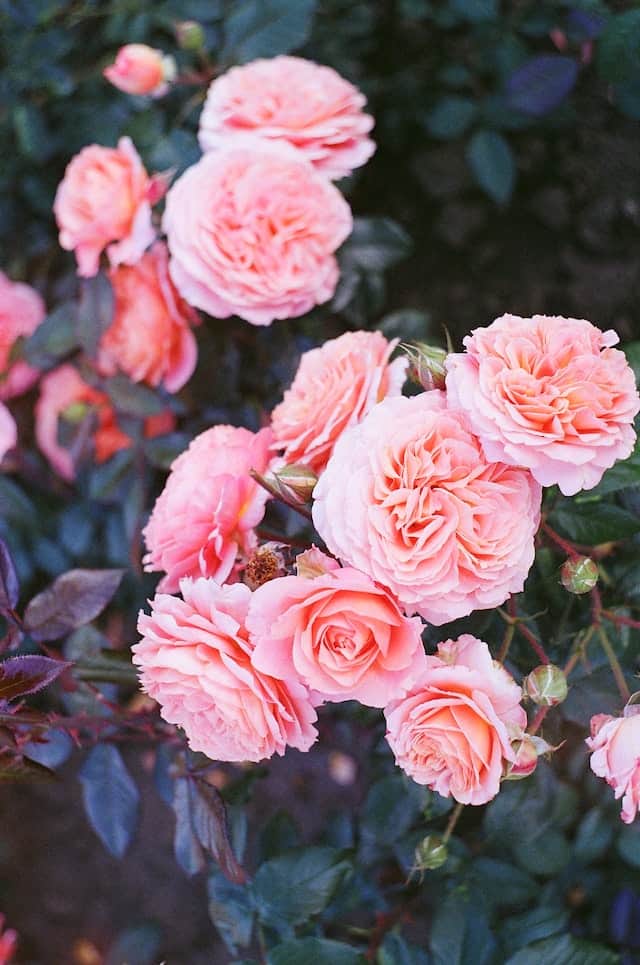
Roses, renowned for their timeless beauty and elegance, can serve as stunning companions for lavender. This partnership works harmoniously because both plants prefer similar sunlight and water conditions, making them an efficient team in the garden.
Pairing lavender with roses adds both texture and fragrance. The sweet, intoxicating scent of roses beautifully complements lavender’s aromatic profile, making the garden a sensory delight. For added flair, consider planting low-growing lavender varieties in front of taller rose bushes. This not only enhances the visual layers in your garden but also provides a charming contrast between the rounded roses and spiky lavender.
Coneflower
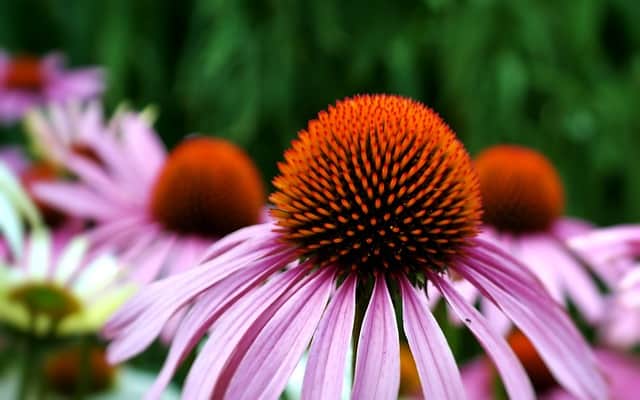
Echinacea, commonly known as coneflower, is another beautiful option to plant alongside lavender. This hardy perennial is sturdy and drought-resistant, thriving in similar soil conditions. The coneflower’s signature cone-shaped center attracts bees and butterflies, enhancing the already vibrant ecosystem planted around lavender.
The bright pinks, purples, and whites of coneflowers pair wonderfully with the rich violet tones of lavender, creating a visually striking combination. This duo provides a prolonged blooming period, ensuring that your garden is rich in color and life from late spring until the first frost. Additionally, both plants are known for their resilience and low maintenance, making them ideal for novice gardeners.
Red Hot Poker
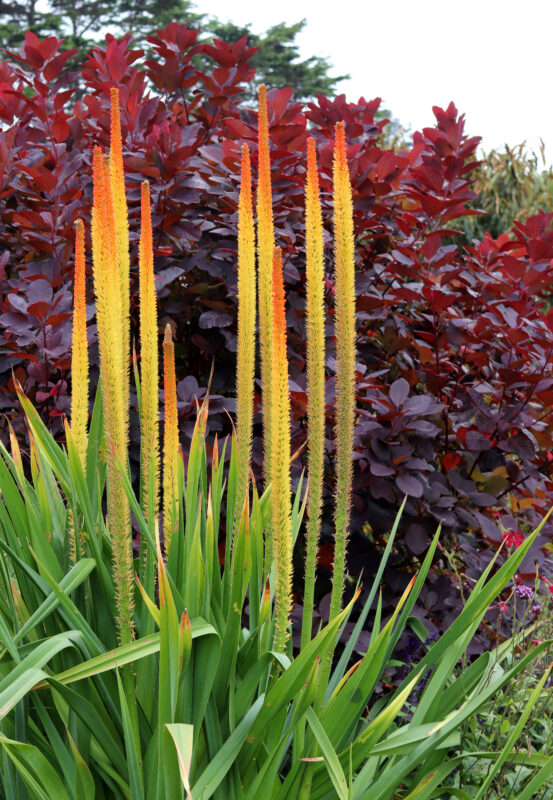
If you’re looking to add a bold statement to your garden, consider the Red Hot Poker (Kniphofia). This striking flower reaches heights of up to four feet, with tall spikes of tubular, fiery red or orange flowers. They thrive in sunny spots and are well-suited to the dry conditions where lavender thrives.
The unique architectural shape of the Red Hot Poker contrasts strikingly with the soft, muted tones of lavender. Beyond their visual appeal, both plants are drought resistant and attract hummingbirds and pollinators, creating a lively atmosphere in your garden. Pairing them together not only enhances the aesthetic but also builds an inviting space for wildlife.
Zinnia
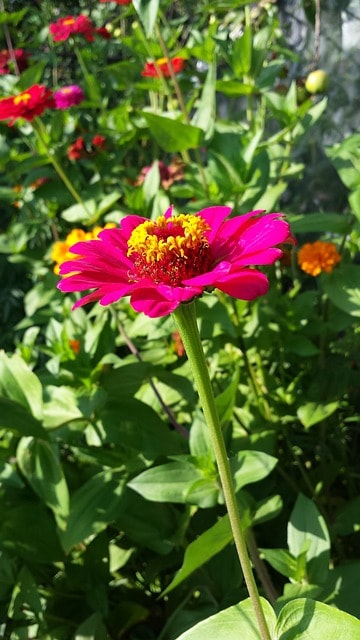
Zinnias are vibrant, cheerful flowers that can brighten any garden and make an excellent companion for lavender. With a wide variety of colors, shapes, and sizes, zinnias can add diversity and charm when planted alongside lavender. Like lavender, they thrive in full sun and well-drained soil, making them easy to care for together.
The compact and bushy nature of zinnias can soften the tall, spiky blooms of lavender. This colorful duo creates not just a bold visual effect but also keeps pollinators engaged throughout the season. Zinnias can provide continuous blooms until the first frost, ensuring that your garden remains stunning long after lavender has finished flowering.
Red Valerian
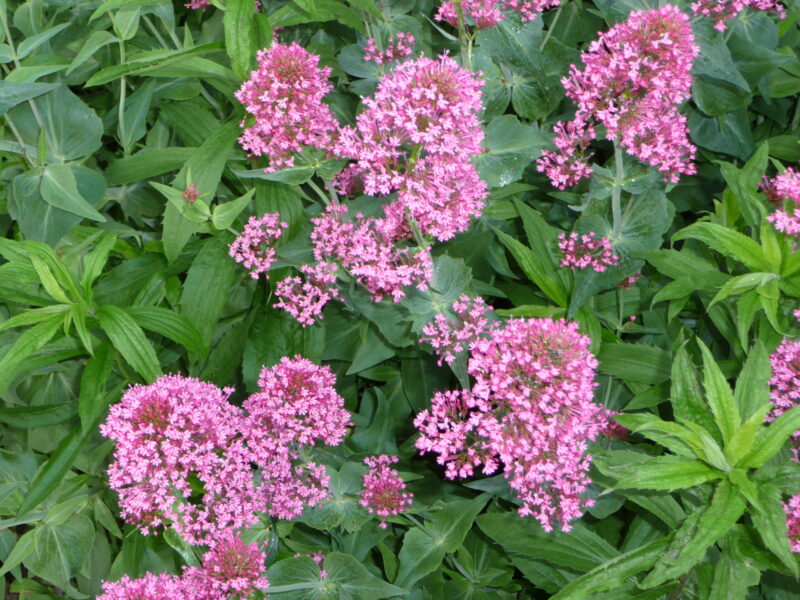
Red Valerian (Centranthus ruber) offers a lush, bushy appearance alongside the neat structure of lavender. With its clusters of tiny pink to red flowers, this plant thrives in similar full-sun environments and can handle dry soil once established.
The airy foliage of Red Valerian contrasts beautifully with the dense spikes of lavender, creating an inviting tapestry of greens and pinks. Additionally, both plants are drought-tolerant, making them perfect companions in xeriscaping or low-water gardens. Their combined allure will attract plenty of butterflies and bees, making your garden a vibrant, buzzing habitat.
Jasmine
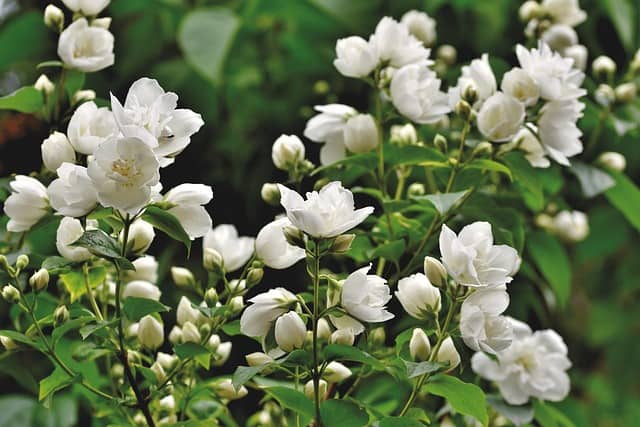
While Jasmine isn’t typically seen as a garden flower, its sweet fragrance and enchanting blooms make it a worthy companion for lavender. Planting jasmine vines nearby can create a beautiful smattering of colors, especially with the white or yellow flowers that many varieties produce.
Jasmine thrives in sunny conditions with good drainage, much like lavender. Together, they create a fragrant backdrop that can transform any outdoor space into a serene retreat. Consider planting jasmine on a trellis or wall adjacent to your lavender, allowing the subtle fragrances to mix and create an enchanting olfactory experience.
Black-Eyed Susan
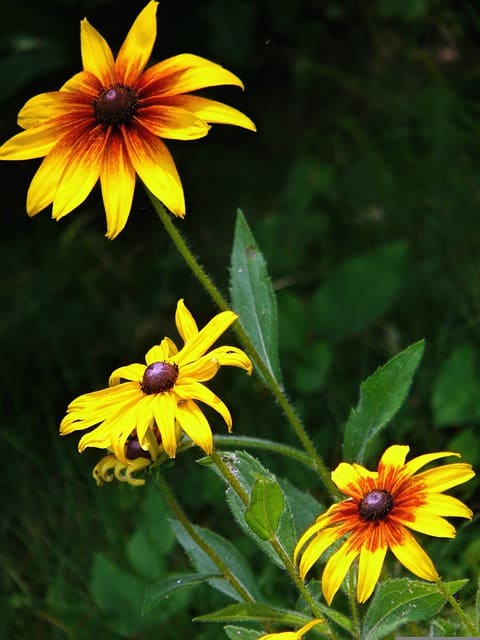
Black-Eyed Susans (Rudbeckia hirta) are an iconic flower that brings golden sunshine to your garden. Their distinctive dark centers surrounded by bright yellow petals contrast well with lavender’s soothing purple shades. Their growing needs align, as both plants enjoy full sun and tolerate a variety of soil types.
Adding Black-Eyed Susans alongside lavender can offer a sense of fullness and life to your floral arrangements. Both plants have a long blooming season, ensuring that your garden remains colorful and vibrant from summer to autumn. They also attract pollinators, enhancing the overall biodiversity of your garden.
Catmint
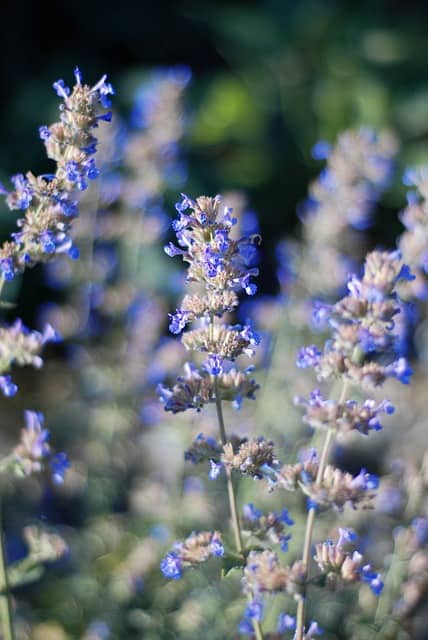
Catmint (Nepeta) is a close relative of lavender and shares many similar traits. Both plants thrive in well-drained, sunny spots and are resistant to drought. The soft, gray-green foliage of catmint complements lavender nicely, while its lavender-blue flowers bloom profusely.
This pairing creates an enchanting visual allure thanks to their harmonic color palette. Additionally, catmint attracts the same beneficial insects as lavender, fostering a healthy ecosystem in your garden. The softness of catmint’s blooms provides a gentle contrast to the robust spikes of lavender, making them ideal for a tranquil garden setting.
Sedum
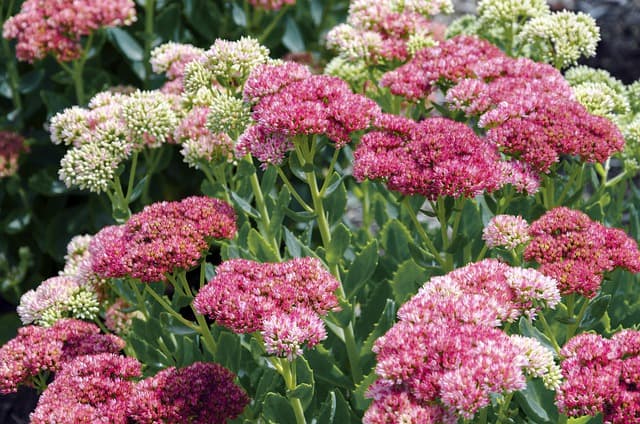
Sedum, or stonecrop, is a succulent with thick, fleshy leaves that will bring texture and structure to a lavender garden. They thrive in dry conditions and are perfect for adding variety with their fleshy greenery and clusters of small star-shaped flowers in shades of pink, red, or yellow.
Their low-growing form makes them an effective ground cover that can frame taller lavender plants, resulting in a beautiful layered effect. Sedum is exceptionally drought-resistant, making it easy to care for alongside lavender. Plus, their ability to thrive in poorer soils allows them to flourish even where other plants may struggle.
Oleander
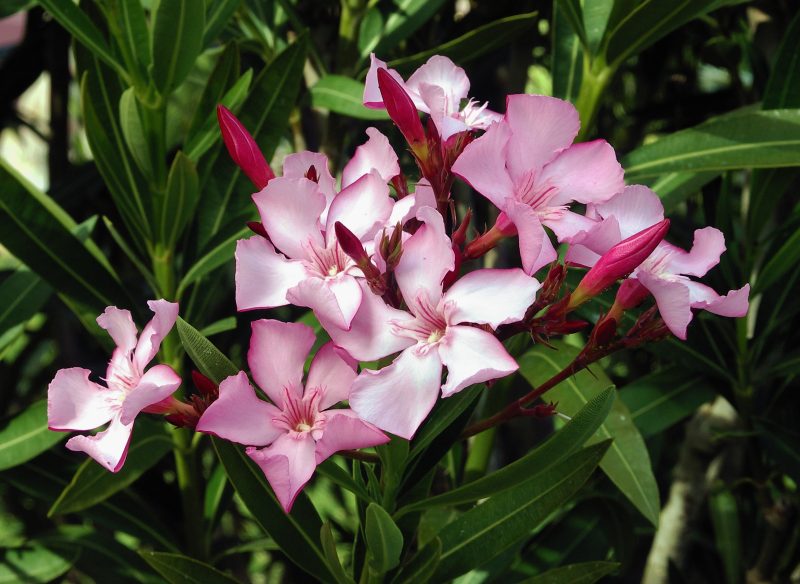
Oleander (Nerium oleander), known for its evergreen leaves and showy flowers, can add exotic flair to a garden with lavender. This hardy shrub is often found in warmer climates and can tolerate drought conditions, like lavender.
Planting oleander alongside lavender creates a visually striking display with contrasting foliage and colorful blooms. However, gardeners should be cautious, as oleander is toxic if ingested. This pairing is best suited for ornamental areas where pets and children do not have easy access. Together, they can provide a stunning, fragrant backdrop for patios and outdoor living areas.
Alliums
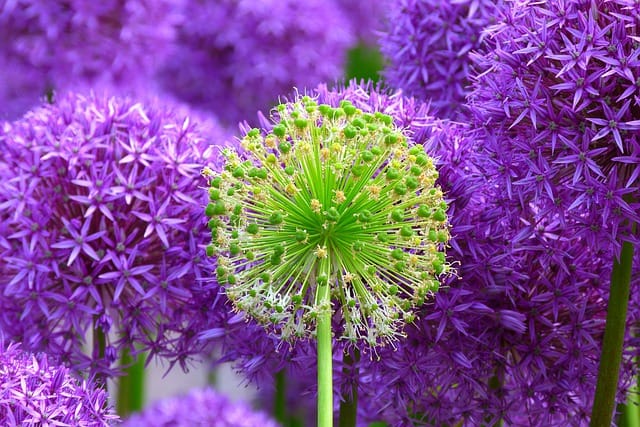
Alliums, or ornamental onions, are celebrated for their globe-shaped flower clusters and unique architectural form. They thrive in the same sun-kissed and well-drained soils that lavender adores, making them excellent companions.
These perennials add height and drama to a lavender garden. The striking round flower heads of alliums can create playful contrasts with the linear spires of lavender. Additionally, both plants are known for attracting pollinators, ensuring a bustling atmosphere in your garden throughout the blooming season.
Conclusion
Combining lavender with other flowers can greatly enhance the beauty, health, and vibrancy of your garden. Each pairing offers unique benefits, whether it’s through visual contrast, complementary growing needs, or attracting pollinators. When planning your garden, consider the color palettes, heights, and blooming schedules of each flower to create a cohesive space.


